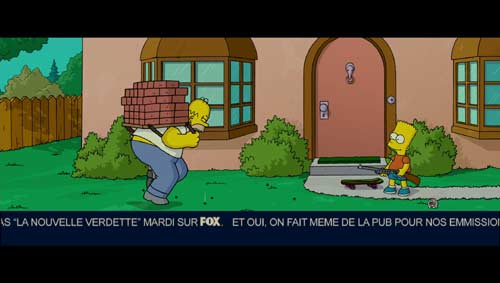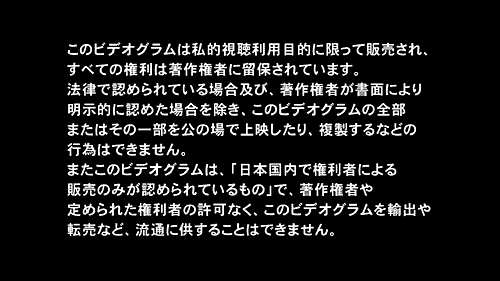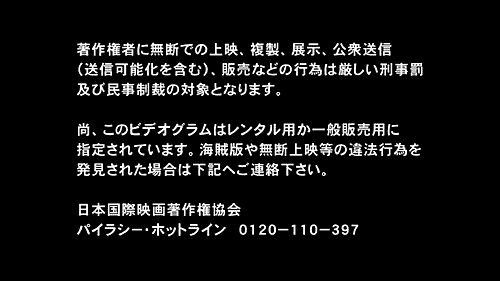Home Entertainment Blog Archive
Brought to you by your friendly, opinionated, Home Entertainment and Technology writer, Stephen DawsonHere I report, discuss, whinge or argue on matters related to high fidelity, home entertainment equipment and the discs and signals that feed them. Since this Blog is hand-coded (I like TextPad), there are no comments facilities. But feel free to email me at scdawson [at] hifi-writer.com. I will try to respond, either personally or by posting here emails I consider of interest. I shall assume that emails sent to me here can be freely posted by me unless you state otherwise.
This archive is for an uncertain period commencing Thursday, 23 April 2009
Over at the 'Unofficial Blu-ray Audio and Video Specifications Thread' on the AVS Forum, a Russian contributor has put up specifications for a couple of Blu-ray audio discs. Note, there's no particular format difference between Blu-ray audio and regular Blu-ray. It's just that the former has little or no video (just puts up a static picture or whatever), so as to allow more bits for the audio.
The second disc -- DIVERTIMENTI - TrondheimSolistene -- is incredible. The audio is so dense that the whole 69 minute program is repeated in two *.m2ts files to cover the five different formats in which it is presented. You get it in 24 bit, 192kHz, 5.1 channels in three ways: losslessly compressed DTS-HD Master Audio (12990kbps), losslessly compressed Dolby TrueHD (13122kbps) and uncompressed LPCM (27648kbps). It is also presented in stereo 24 bit, 192kHz LPCM (9216kbps) and regular 5.1 channel Dolby Digital (640kbps). Actually, you get a sixth version as well: the DTS-HD Master Audio track contains a standard (albeit nominally 24 bit) DTS version at 1,536kbps.
This seems like an ideal disc to use to compare audio standards.
Well, that's irritating. For quite a few years I've been using ZoneAlarm Pro for my computer security needs. I've currently got three licences for three computers. It provides a firewall, antivirus, and a few odds and sods to keep my computer safe.
Or so I thought.
Today I received an email from ZoneLabs warning me of a security risk called 'Gumblar', in part as follows:
Gumblar is currently targeting users of IE and Google search, delivering malware through compromised sites that infects a user's PC and subsequently intercepts traffic between the user and the visited sites. This means that once infected, anything the victim types could be monitored and used to commit identity theft, such as stealing credit card numbers, passwords or other sensitive data. Visitors encountering the compromised website also risk having their subsequent search results replaced with links that point to other malicious websites. The malware can also steal FTP credentials from the victim's computer and use them to infect more sites, thus increasing the spread of this threat.Okay. But I've got the ZoneAlarm Security Suite which is supposed to be all I need to secure my computer. In fact, I pay for something I don't really need, since I could rely on the Windows XP firewall. All I really need to add is antivirus.Who is at risk?
Users of Internet Explorer and Google's search engine.
But:
How do I protect myself?Apparently, all I have to do is pay $US29.95 to save myself from Gumblar. Oh, is that for one computer or all three? And what about next week when some new form of attack develops. And the week after with a different type. Am I going to have to keep paying in dribs and drabs forever, on top of my ZoneAlarm licence?
If you are running ZoneAlarm® ForceField™ browser security technology you are already protected. If you are running ZoneAlarm Extreme Security, you must turn ON ForceField virtualization (Open ZoneAlarm Extreme and go to 'browser security', 'settings', 'advanced' and click 'enable virtualization').If you are only running the ZoneAlarm Pro or ZoneAlarm Security Suite, you could be at risk, since they do not include virtualization technology which protects from these types of stealth Web browser attacks. [colour in original]
When my licences run out I shall be going back to Windows Firewall and looking into some other antivirus.
My Blu-ray disc data gathering project continues, in which I try to determine as many technical and standards details as possible about Blu-ray discs. Of the nearly 300 Blu-ray discs in my database, 98 now have a 'Completion' score of '12', the highest I presently give. With DVDs the highest score I gave was '5', which shows how much more complicated BDs are.
To get '12', my database record identifies -- by my own exploration -- amongst the more common stuff things like region code, size of the disc, the number of layers, the Titles on the disc, the special features, the video and audio formats of the main feature, and the video and audio formats of every identifiable special extra on the disc. Oh, and the *.m2ts file names for each title, and the audio and video bitrates.
That can be quite a bit of work.
I am presently going back over the database entries I have with a score of '8' (these lack the items mentioned in the last sentence of the list above) and promoting them by running them through BDInfo. Brilliant tool! Right now I am working on The Simpsons Movie. It has some interesting characteristics.
Those familiar with the disc will know that there are two ways of playing it back. One is just to watch the movie in the usual way, with a range of different languages and a 'Director's Commentary' available. The other way is to watch it with 'Commentary' enabled. This is different to the other commentary, and invoking it sends to the movie back to the start.
This version uses a different playlist and is 101:28 long vs 86:44. The difference is due to three points at which the commentary team 'pause' the movie to allow themselves time to expand on an issue. What you see on the screen is the image pausing, and then fading to grey scale. At the end, the colour ramps up again in the moment before movement is resumed. Obviously this 'paused' moment demands far fewer bits of data than movements, so you can see these three sections clearly on this bitrate graph:

All this is managed through playlists and seamless branching. The main movie consists of six files playing one after the other, while the commentary version has nine: the original six plus three others.
While trying to confirm this I played the three files for the 'pause' sections -- 00120.m2ts, 00122.m2ts and 00121.m2ts, in order -- and noticed that all three files had the main audio with which the movie opens: the 20th Century fanfare, followed by Ralph's explanation as he appears on their logo, and so on. Further exploration revealed that all the other language soundtracks were also present, along with the other commentary track, and all took their sound from the start of the movie. The exception was the actual commentary track which was supposed to be there. This had the proper comments relating to that section of the movie.
When you're playing the disc normally, only that commentary section is available. All the other tracks are invisible.
So why are these other audio tracks present on those insert files when they will never be played? My guess is that the requirements of seamless branching include having compatible audio tracks. All those other languages exist in the main part of the movie, so presumably they must exist for that seamless matching together in the pause sections. I could be wrong here, but let us grant that that is indeed the case.
Some space is still wasted, though. All the audio tracks are constant bitrate, so their content makes no difference to their size. Except for the main English audio track, which is DTS-HD Master Audio, 24 bits, 48kHz. It averages 3619kbps in the movie. If this track were empty, then presumably the amount of data required by it could fall back to the 'core' 1,509kbps DTS track. So by including sound in these three files, the disc wastes over 213MB by my calculation.
No criticism here: the movie scores a massive MPEG4 AVC video bitrate averaging over 33Mbps, and still only uses 31.5GB of the available 50GB. But I do find it interesting.
One other point on this disc. In the playlists for both versions of the movie the file 00127.m2ts is listed by BDinfo, and immediately followed by '00129.m2ts(1)'. This would suggest that they are alternatives, and indeed they turn out to be. Both are 19 seconds long and contain the Fox promo banner gag running across the screen while Bart is shooting Homer with an air rifle. The 00129.m2ts has this in French rather than English.
So it seems that the WALL-E branching technique is not necessarily required to present multiple language sections of the movie:

Most Warner Bros Blu-ray discs are fairly basic in their organisation. They lack BD-Java, BD-Live, BonusView and so on. I'm not complaining, because Warner Bros has been pretty aggressive at getting its back catalogue out there in the new format. And its discs don't always lack these things. For example, Batman Begins has BonusView and Bookmarks.
Gran Torino, Clint Eastwood's most recent movie as both director and actor, is BD-Java enabled and has BD-Live. The Australian version is distributed by Roadshow Entertainment, but the disc appears to be identical to the US Warner Bros version.
Now there is something interesting about a lot of Warner Bros Blu-ray discs, including Gran Torino and many others that quite lack BD-Java: they often carry Japanese language audio and subtitles ... but you won't see them on either the disc's setup menu, nor if you use the 'Audio' key on your remote control. It seems that even the BD-Java-less ones can query the 'Menu language' setting on the player and invoke different menu and access systems according to whether or not the player is set to Japanese.
Hardware players sold in Australia will not, as far as I've explored so far, allow you to set Japanese as their language. But you can in PowerDVD. So I was able to confirm this.
The Gran Torino Blu-ray when played with Japanese selected omits all the languages available except English, and adds Japanese, both for subtitles and audio. In fact it gives two different Japanese subtitles (I believe that there are two forms of writing in Japanese). It also starts up with two Japanese language text screens before the Warner Bros logo (with English it goes directly into the logo). These are the screens:


I wonder what they are saying.
Amazon has announced the 'Kindle DX' portable document reader. Much larger screen and native PDF support.
Starting to look very impressive, and makes electronic books and magazines a real possibility. To seal the deal, it needs to be thinner still, more robust (or flexible -- even able to be rolled up) and offer a colour display.
I'm back. An excellent Telsta/Bigpond tech guy came around first thing this morning and got me going. Something was definitely wrong at the other end. He provided a new Bigpond two wire gateway for my ADSL connection. My old Alcatel SpeedTouch ADSL modem, supplied by Telstra when I first signed up years and years ago, bears a sticker on the underside declaring that its warranty expires in September 2001.
Once that was going, my Belkin router refused to provide a path through to the modem, so I figured it was time to replace it. It took me three stores to find a non-modem, non-wireless router. Apparently I'm pretty old-fashioned.
Found a Netgear one. Took it home and installed it, and stuff all seems to be working properly.
A couple of times during all this I rang RG Computer Repairs, which I found in the phone book. I was just after a small outfit that could be flexible and was local. RG is only a couple of suburbs away.
As it turned out, Rodney Green (it's his business) didn't need to come out, but spoke great sense over the phone. So I just wanted to say to anyone in the Canberra area: if you have a problem, try RG Computer Repairs on 6291 5444 or 0404 041 921.
One word describes why I felt I needed a new computer: Blu-ray. My old computer would not play Blu-ray discs in any watchable way. Not that I watch them on a computer, but when checking things out, half the time I would switch off the speakers because the stuttering sound was so irritating. With the new computer (Intel Core Duo E8400 running at 3GHz with 4GB of RAM), PowerDVD plays them smoothly and well.
I also scan lots of Blu-ray discs with BDInfo in order to learn more about their inner workings. So far I've scanned about 70 of them. On the old computer (a Pentium D) that took a lot of time. A typical dual layer disc would take three to four hours, and use 40% or more of CPU, seemingly increasing as the process continued. I took to starting a scan going when I knew I'd be away from the computer for a few hours, usually at bed time.
I've just scanned the Blu-ray of Sleeping Beauty (DVD vs Blu-ray comparison coming soon). The disc is 31.5GB. I would have expected it to take at least three hours. It took 37 minutes!
Now, if only I had Internet!
Goodness knows when you will see this. Internet for me, at the moment, is thoroughly dead. New computer. Spent Thursday night loading stuff. Likewise Friday morning. During one of its reboots, its graphics card failed. The shop people actually came out and switched it over. Loaded more stuff. Friday night, Internet stopped working. Thought it may have been at the other end, so I waited until this morning. Spent an hour and a half on the phone with a nice lady from India, who eventually decided to kick it upstairs to Telstra Bigpond (my ISP). They will be on to me within two working days. Since it is Anzac today here today, and since it is a Saturday, Monday is the holiday. So I'm hoping that by Wednesday something will be happening.
Meanwhile, if I don't put my thoughts down when they occur to me, they will never make it here.
So I'm still installing software in the meantime. The computer itself still works. Time to put in iTunes. As I've said lots of times, I love the iPod hardware and detest the iTunes software.
I go looking for the iTunes installation software. I have a CD, of course, from a couple of years ago. But I prefer to load in the latest -- the latest, that is, to which I have access in the absence of the Internet. I find that I have the 60MB iTunes setup program for, it turns out, version 7.7. Not too old, and the file is dated July last year, so I figure that will do for the time being.
It installs, but tells me at the end that the file 'iTunes Library.itl' is newer than the current version of iTunes. I try to start up iTunes. It tells me the same thing and won't start.
No hint on what to do. None of the bleeding obvious: 'Would you like to delete this file and proceed?' No, it just leaves you hanging. I tried to invoke it by plugging in the iPod. But it delivered the same message, leaving me with an iPod connected and 'Do Not Disconnect' written on its screen (it'd probably be okay to disconnect anyway, but you can make certain by clicking on the 'Safely Remove Hardware' icon in the System Tray and following the instructions).
Anyway, I've deleted that file (it's under 'My Music') and restarted. Not hard, but if you were a novice, what would you do next?